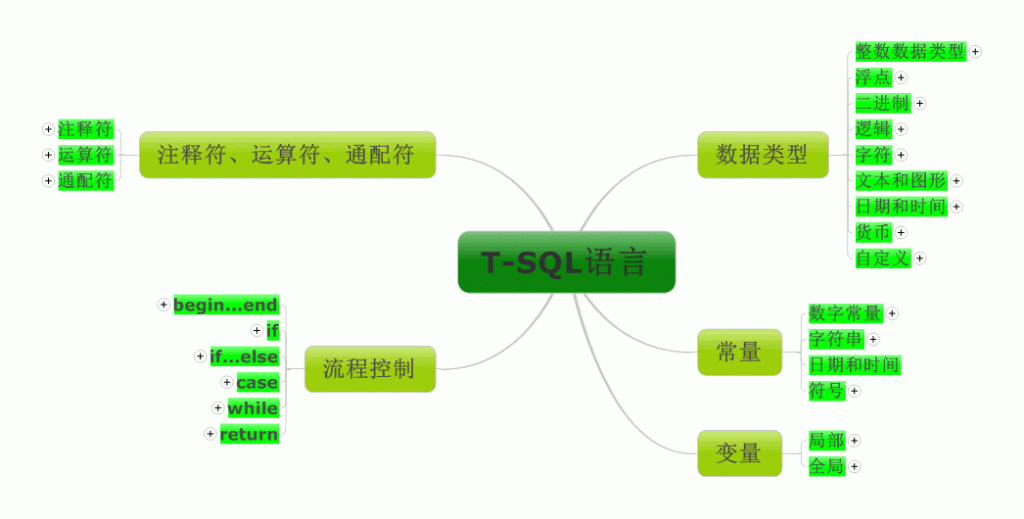
SQL(Structured Query Language)结构化查询语言, 是一种组织、管理和检索计算机数据库存储的数据的工具。
简单操作的举例:
1、为局部变量赋值
use student
declare @songname char(10)
select @songname=课程内容 from course where 课程类别='艺术类'
print @songname
select语句赋值和查询不能混淆,例如声明一个局部变量并赋值的SQL语句如下:
declare @b int
select @b=1
另一种局部变量的赋值方式是使用set语句:
declare @song char(20)
set @song='I love flower'
2、全局变量应用举例:
在pubs数据库中修改“authors”数据表时,用@@error检测限制查询冲突
use pubs
go
update anthors set an_id='172 32 1176'
where au_id='172-32-1176'
if @@error=547
print'a check constraint violation occurred'
3、取余运算:
求2对5取余:
declare @x int,@y int,@z int
select @x=2,@y=5
set@z=@x%@y
print@z
注意:取余运算两边的表达式必须是整型数据
4、比较运算
查询打折之后价格仍大于12美元的书代号:
use pubs
go
select title_id as 书号,type as 种类,price as 价格
from title
where price-price*0.2>12
5、逻辑运算
use student
select *
from student
where 性别='女' and 年龄>21
6、begin..end
完成两个变量交换:
declare @x int,@y int,@t int
set @x=1
set @y=2
begin
set @t=@x
set @x=@y
set @y=@t
end
print @x
print @y
7、if
判断一个数是否是正数
declare @x int
set @x=3
if @x>0
print'@x是正数'
print'end'
8、if...else
判断象限
declare @x int,@y int
set @x=8
set @y=3
if @x>0
if @y>0
print'@x@y位于第一象限'
else
print'@x@y位于第四象限'
else
if @y>0
print '@x@y位于第二象限'
else
print'@x@y位于第三象限'
9、while
求1~10之间的和
declare @n int,@sum int
set @n=1
set @sun=0
while @n<=10
begin
set @sum=@sun +@n
set @n=@n +1
end
print @sum
10、return
declare @x int
set @x=3
if @x>0
print'遇到return之前'
return
print'遇到return之后'
执行后的结果是:遇到return之前
说明位于return之后的语句不会执行